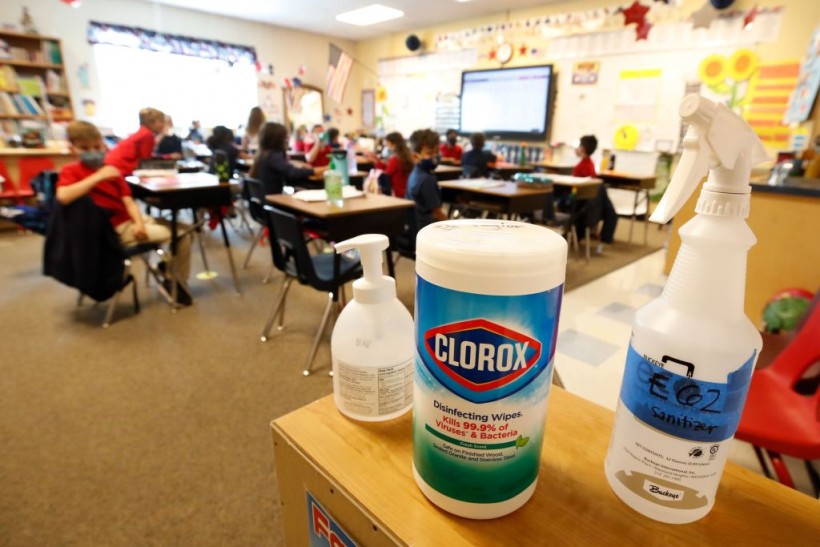In a twist of digital fate, Clorox, renowned for keeping things spotless, is grappling with an unexpected stain on its operations. According to the Los Angeles Times, a recent cyber intrusion, uncovered on August 14, left Clorox's IT systems tainted with unauthorized activity, prompting the company to take swift action.

Hand sanitizer and other cleaning products sits on a table at Freedom Preparatory Academy on September 10, 2020 in Provo, Utah.
Clorox Shuts Down Affected Systems
In response to the breach, Clorox promptly shut down the affected systems and started operating at a reduced production capacity. This measure, while necessary, gave rise to a surge in consumer product scarcity, leaving many shelves barren.
The aftermath of the cyber assault unearthed substantial harm to Clorox's IT framework. In the weeks since, the company has been laboring diligently to mend its ordering systems, gradually reinstating their functionality.
Full-scale resumption of regular order processing is slated for the week commencing September 25. However, the ramifications are poised to linger. Clorox foresees a protracted period of scarcity, potentially stretching sales constraints until March.
This comes as a significant blow, compelling Clorox to revise its Q1 financial forecasts, signaling a material impact on its results. The company's internal review ascertained that the breach had been successfully contained.
This development, however, did not protect the company's stock from a dip, with shares of Clorox Co. dipping approximately 2.4% following the public filing, concluding the day at $142.70.
Read Also: Chinese Hackers 'Flax Typhoon' Targeting Taiwan Government Agencies, Microsoft Claims
Cyber Intrusion
While the recent cyber disruption significantly contributes to Clorox's current supply woes, it is worth noting that this isn't the first time the company has grappled with shortages.
The surge in demand for Clorox disinfectant wipes and sanitizing products during the onset of the COVID-19 pandemic in 2020 left the company scrambling to meet market needs.
This situation lingered well into the subsequent year. The advent of the COVID-19 pandemic in early 2020 brought about a seismic shift in consumer behavior worldwide.
With hygiene and sanitation taking center stage in public consciousness, the demand for disinfectant products skyrocketed. Clorox, a household name in cleaning and sanitation, found itself at the epicenter of this unprecedented surge.
Consumers, faced with the urgent need to protect themselves and their environments from the highly contagious virus, turned to trusted brands like Clorox for solutions.
Disinfectant wipes and sanitizing products became hot commodities. Shelves that once housed ample supplies of these products were quickly stripped bare.
For Clorox, this sudden and extraordinary surge in demand presented both an opportunity and a challenge. On one hand, it signaled a heightened relevance and an urgent need for their products. On the other, it posed a logistical challenge of monumental proportions.
The company had to rapidly reevaluate and recalibrate its production capacities, supply chains, and distribution networks. Now, Clorox faces a unique challenge as scarcity of these products may last for a long time due to a cyber intrusion.
Related Article: Russia and Iran State-Linked Hackers Are Increasingly Attacking Politicians, Journalists - UK Cybersecurity Center Alleges









